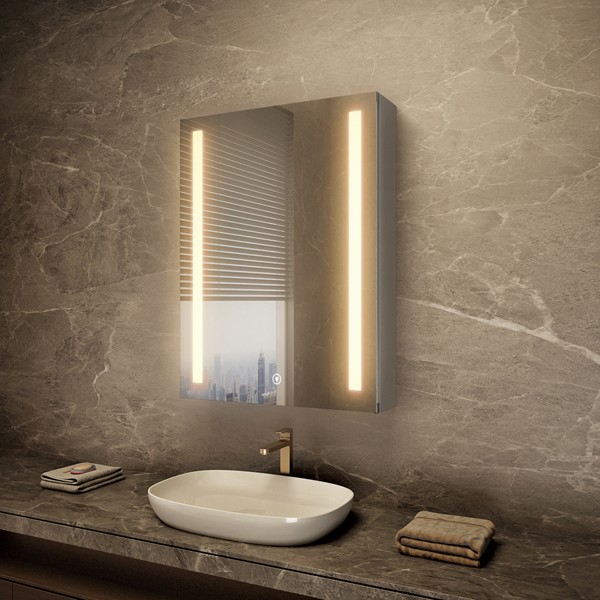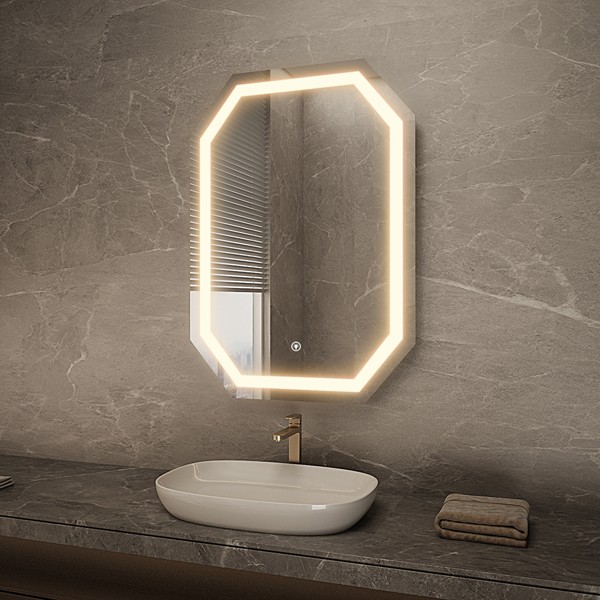Ensure the optimal height of your bathroom sink for a comfortable usage experience, whether you're washing hands, brushing teeth, or examining yourself in the mirror. If it's too high, children may struggle to reach it, while if it's too low, adults may have to bend down to complete their daily routine.
The typical measurement for a bathroom sink's height is between 32 and 36 inches. Keep in mind that this may vary for other sink styles, such as vessel, pedestal, and wall-mounted sinks. Let's examine this post in more detail.
Key Takeaways
-
Proper sink height can greatly improve comfort and accessibility in the bathroom.
-
The height for installing sinks can vary depending on the type of sink and the needs of the user.
-
Ensure ADA compliance and explore options for adjusting the height.
Standard Bathroom Sink Height
Countertop and Sink Measurements
The standard height for sinks usually falls between 32 and 36 inches from the floor to the top of the sink. Standard sinks typically have a depth of approximately 8 inches and a countertop height of 32 inches is a common choice.
|
Sink Type |
Typical Height Range |
|
Standard Sink |
32 to 36 inches |
|
Vessel Sink |
30 to 36 inches |
|
ADA Compliant |
up to 34 inches |
Consider a bathroom vanity height with a vessel sink that may be slightly lower to accommodate the sink's added height; make sure the sink's centerline is still within a comfortable reach.
ADA Compliance
Ensure the bathroom is ADA compliant by keeping the sink height below 34 inches, measured from the floor to the top. Also, make sure there is enough space under the sink for wheelchair users to easily access it.
|
ADA Requirement |
Specification |
|
Maximum Height |
34 inches |
|
Under-sink Clearance |
Wheelchair accessible |
Installation Notes
Consider plumbing and ergonomic needs when installing a bathroom sink for proper function and user comfort.

Possible option: Plumbing Needs
Ensure successful operation and code compliance by following specific plumbing requirements when installing your bathroom sink. Keep in mind the location of wall studs to securely mount the sink or vanity. Allow ample clearance for plumbing, such as the drain and water supply lines. Always have a tape measure on hand to verify dimensions and ensure everything fits as planned.
In addition, it would be beneficial to familiarize yourself with your local plumbing code in order to fully understand the necessary specifications for installing your sink. If you're unsure, consider enlisting the help of a professional plumber who can offer their expertise to help you navigate these requirements successfully.
Ergonomic Factors
Consider ergonomics when determining your sink's height to avoid body strain. The recommended range for the top of your sink is 32 to 34 inches for most adults. For taller household members, a height of up to 36 inches may provide added comfort. Be sure to test various heights using a temporary platform before making a final decision to prevent back and neck discomfort.
Consider the unique needs of the main users and keep in mind that the sink's height can impact the length of the supply lines and the plumbing underneath. Use ergonomic principles to ensure a comfortable and efficient experience with your bathroom sink.
Explore Different Types of Bathroom Sinks
When choosing a bathroom sink, your decision is crucial for both the practicality and aesthetic of your space. Take into account factors like bathroom layout, counter height, and plumbing codes to ensure that your selection complements your design and meets your needs.

Vessel Sinks and Vanities
Vessel Sinks:
-
Consider a lower vanity height if placing the sink above the counter, with a standard floor to sink height of 32-36 inches.
Recommended sizes range from 16 to 24 inches in diameter, with a typical depth of 5 to 8 inches.
When using vessel sinks, the base of the vanity cabinet may need to be adjusted to maintain a comfortable height. It is important to consider the height of the drain assembly, which should align with the sink's base.
Pedestal and Wall-Mounted Sinks
Pedestal Sinks:
-
After installation, the overall height can range from 30 to 35 inches.
-
Follow plumbing codes to correctly position the waste pipe and water supplies in the pedestal.
Enhance the style and functionality of your small bathroom with a freestanding pedestal sink. Keep in mind that the rough-in plumbing will need to be carefully planned.
Wall-Mounted Sinks:
-
Elevating options: Can be installed at different elevations, usually between 29 and 34 inches, with the latter being the highest for meeting ADA standards.
-
Beneficial for cleaning and accessibility, this characteristic enables a clear floor space.

FAQs on Sink Heights
What is the typical height for a bathroom sink?
When installing a bathroom sink, keep in mind that the height can range from 31 to 36 inches from the floor to the top of the sink counter. Please note that if the sink is a vanity, vessel, or undermount style, the height may differ.
What is the ideal height for a children's bathroom sink?
For children, it's important that sinks are within their reach. A good sink height would be around 30 inches, and you may even want to include a step stool for sinks set at a standard height.
When determining the height of your sink, what points should you take into account?
When determining the height of your bathroom sink, take into account the height of those who will be using it most frequently. For someone taller (over 5′ 10″), it may be beneficial to add 2-4 inches to a standard sink, placing it at a height of approximately 34-38 inches. Additionally, make sure to consider the sink's depth and whether it meets ADA compliance standards, which require a maximum height of 34 inches.
What makes the incorrect sink height uncomfortable?
Ensure the sink is adjusted to the correct height to prevent back strain and discomfort while using it. Consider the user's needs when setting the sink height.
How can we help with determining the standard rough-in height for sink plumbing?
For the best results when installing the plumbing behind the sink, known as the rough-in height, aim for a height of approximately 24 inches above the finished floor. This measurement allows for a countertop that is 32 inches high and a sink that is 8 inches deep.
What is the height requirement for the sink during installation?
When installing, it's important to take into account the combined height of the sink, vanity, and countertop. Make sure to measure from the floor and adjust the installation height to suit the comfort of the users.
 Shanghai Divas Glass Co.,Ltd
Shanghai Divas Glass Co.,Ltd
